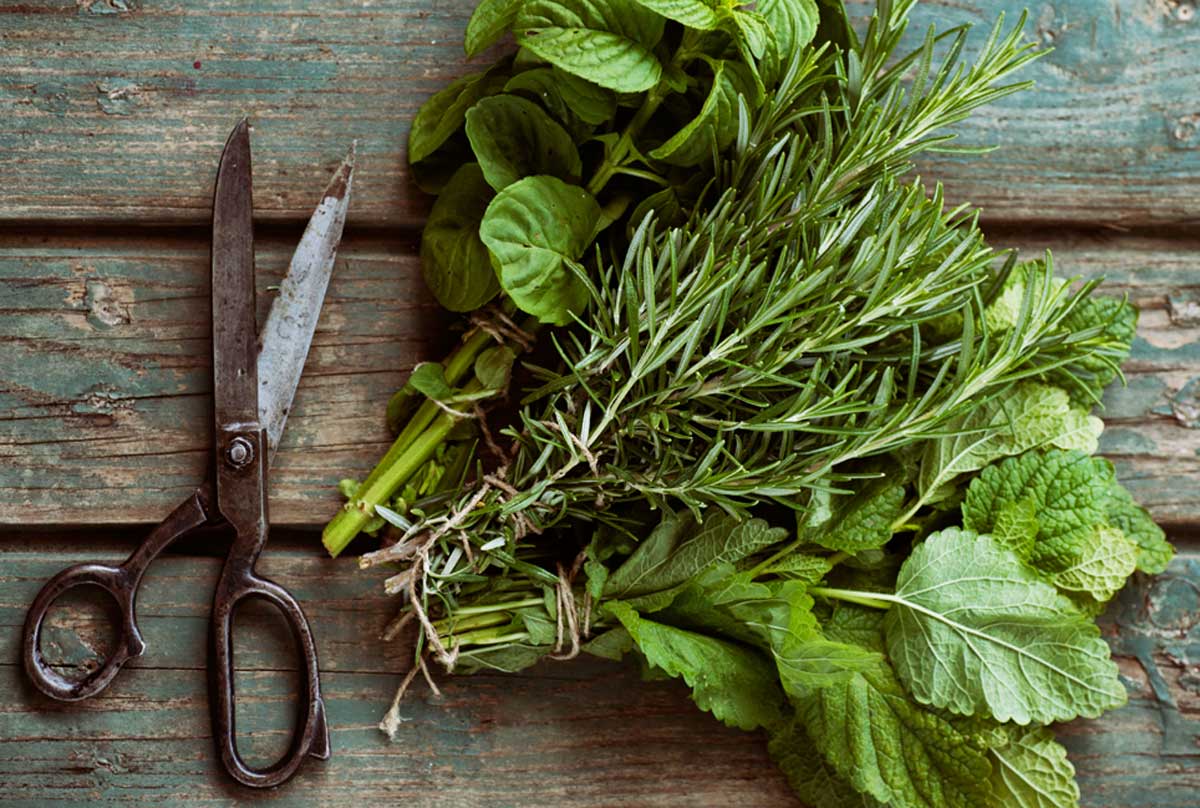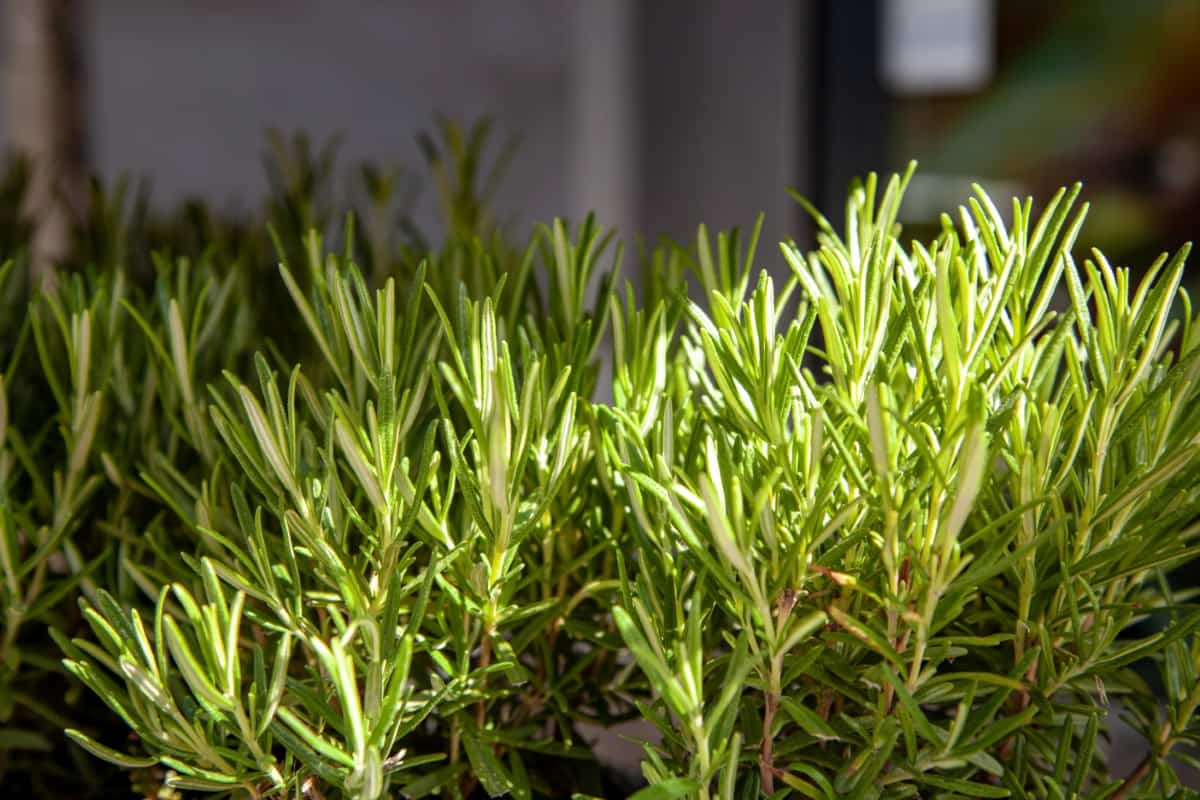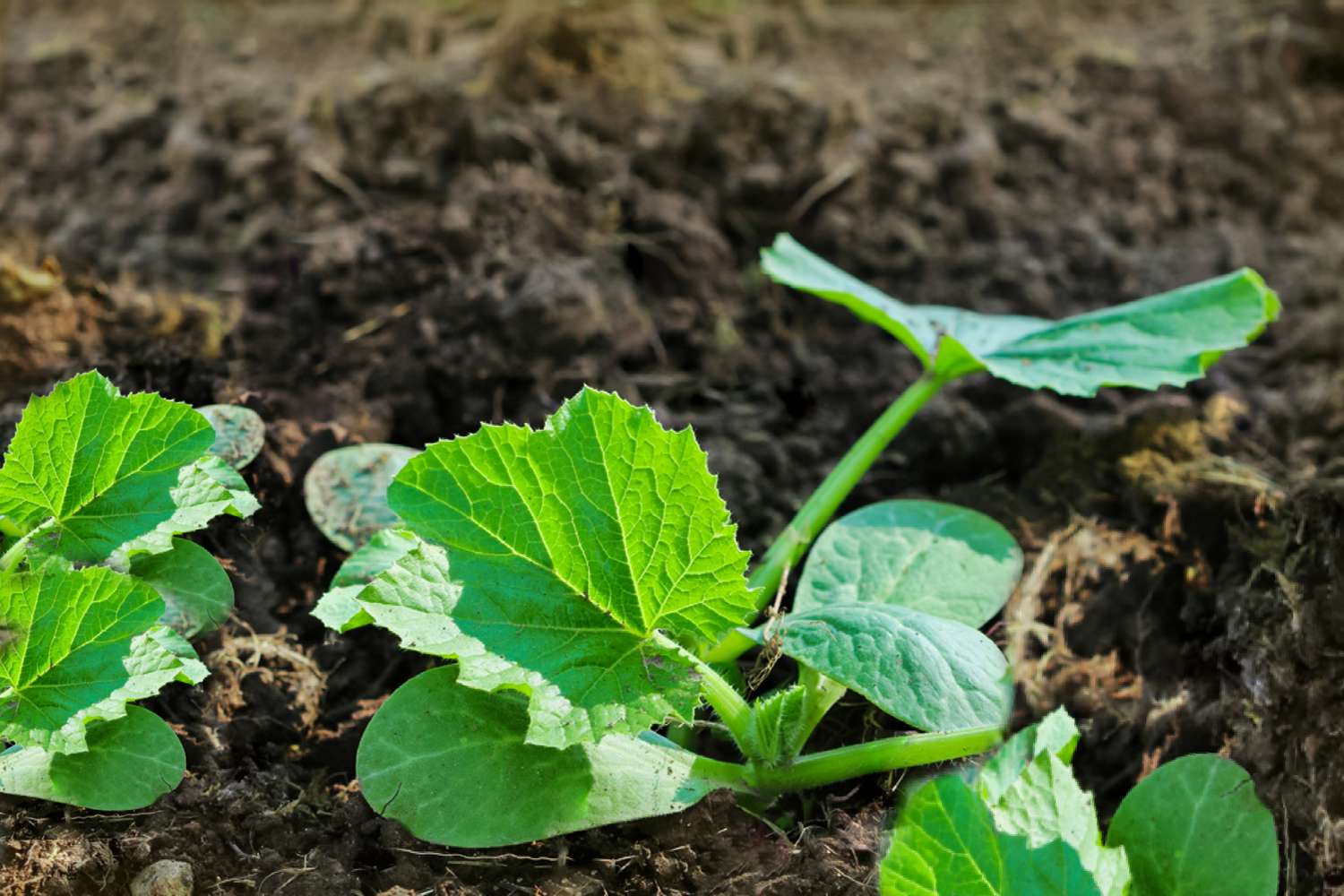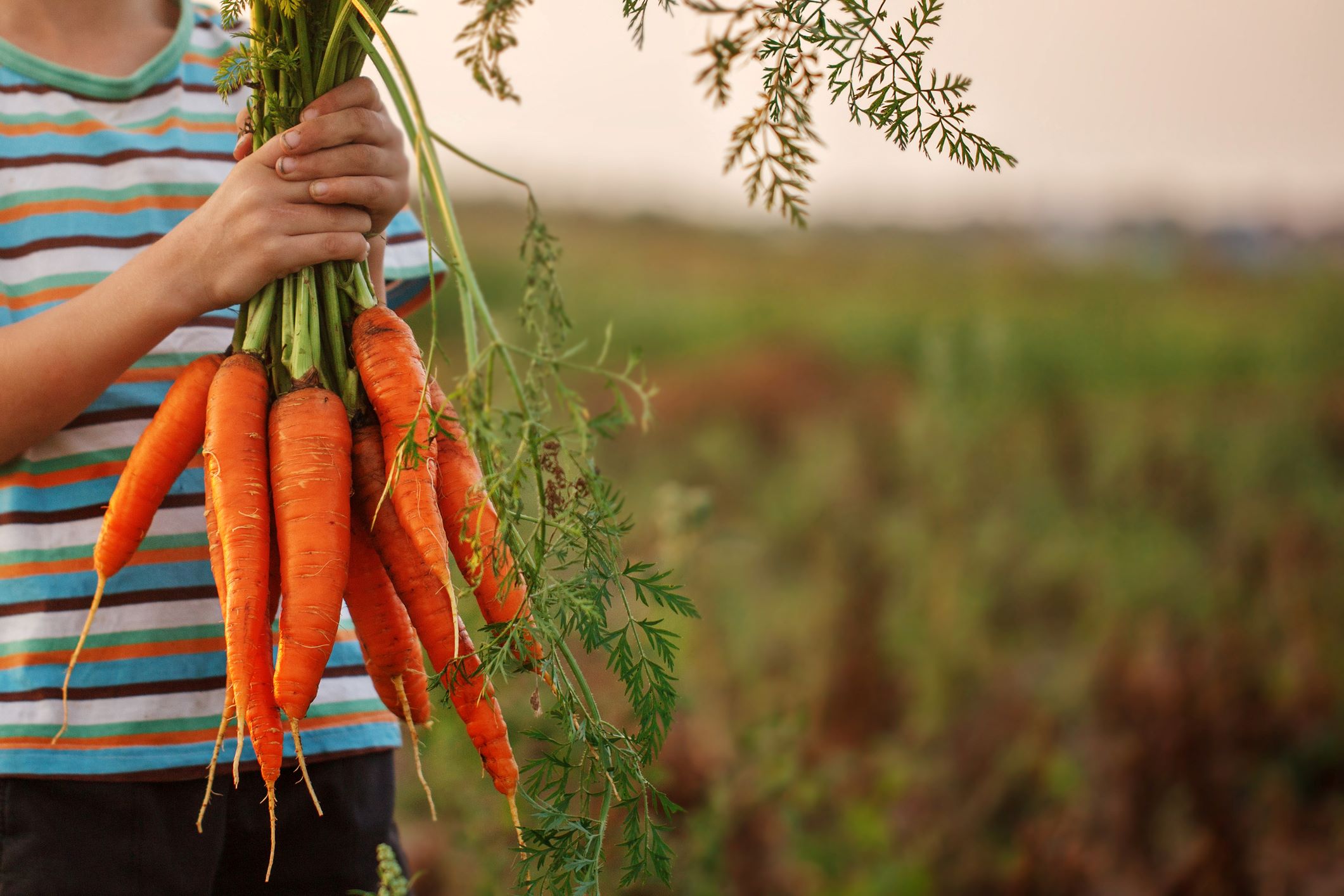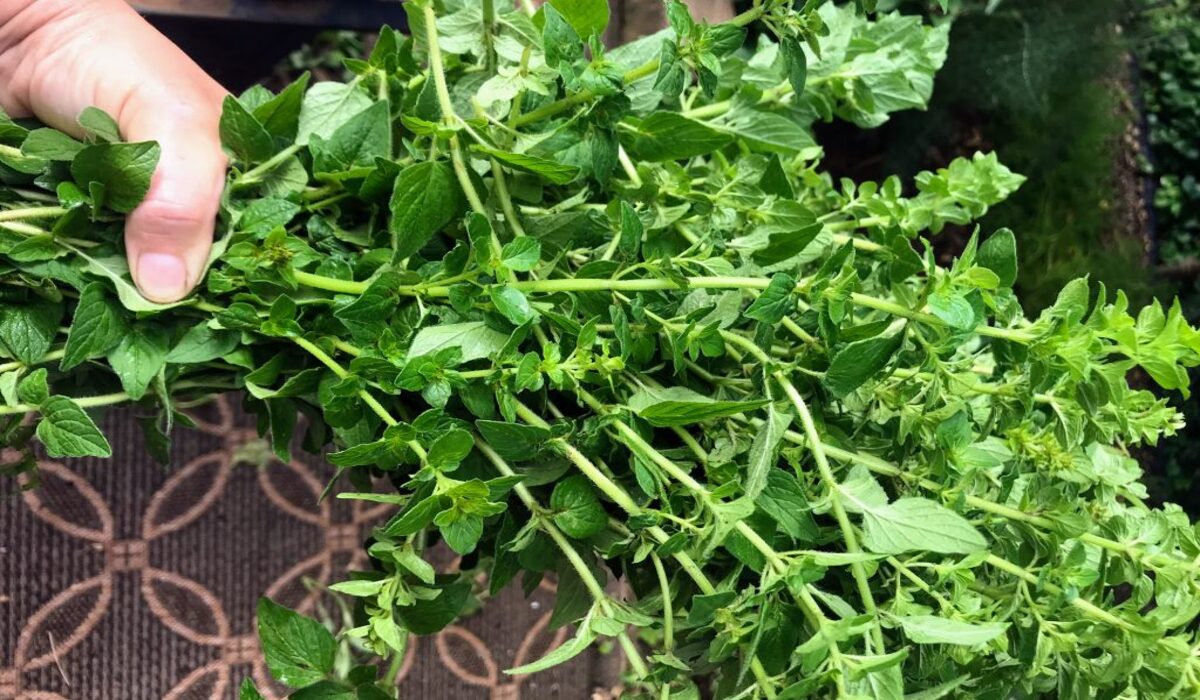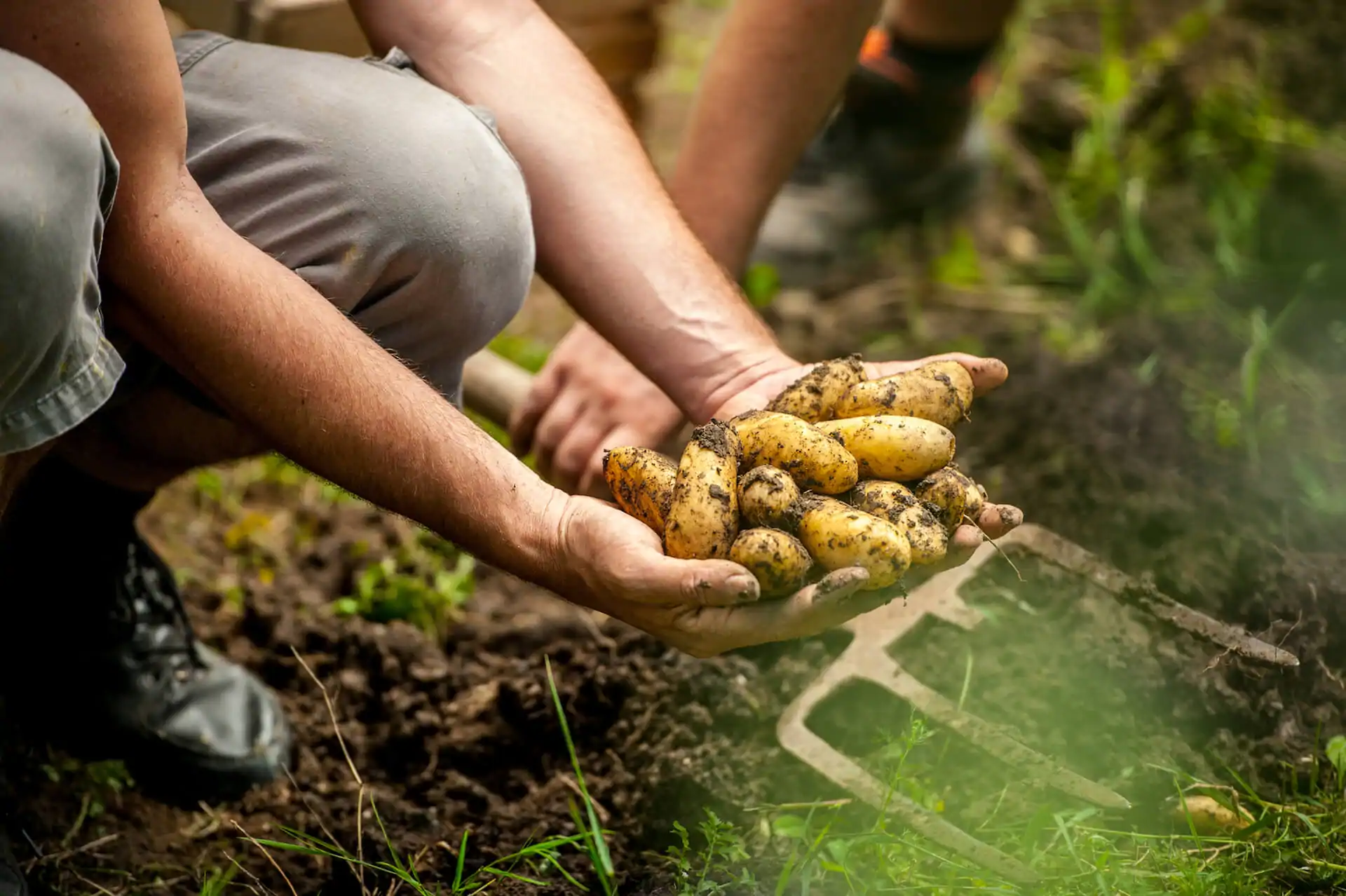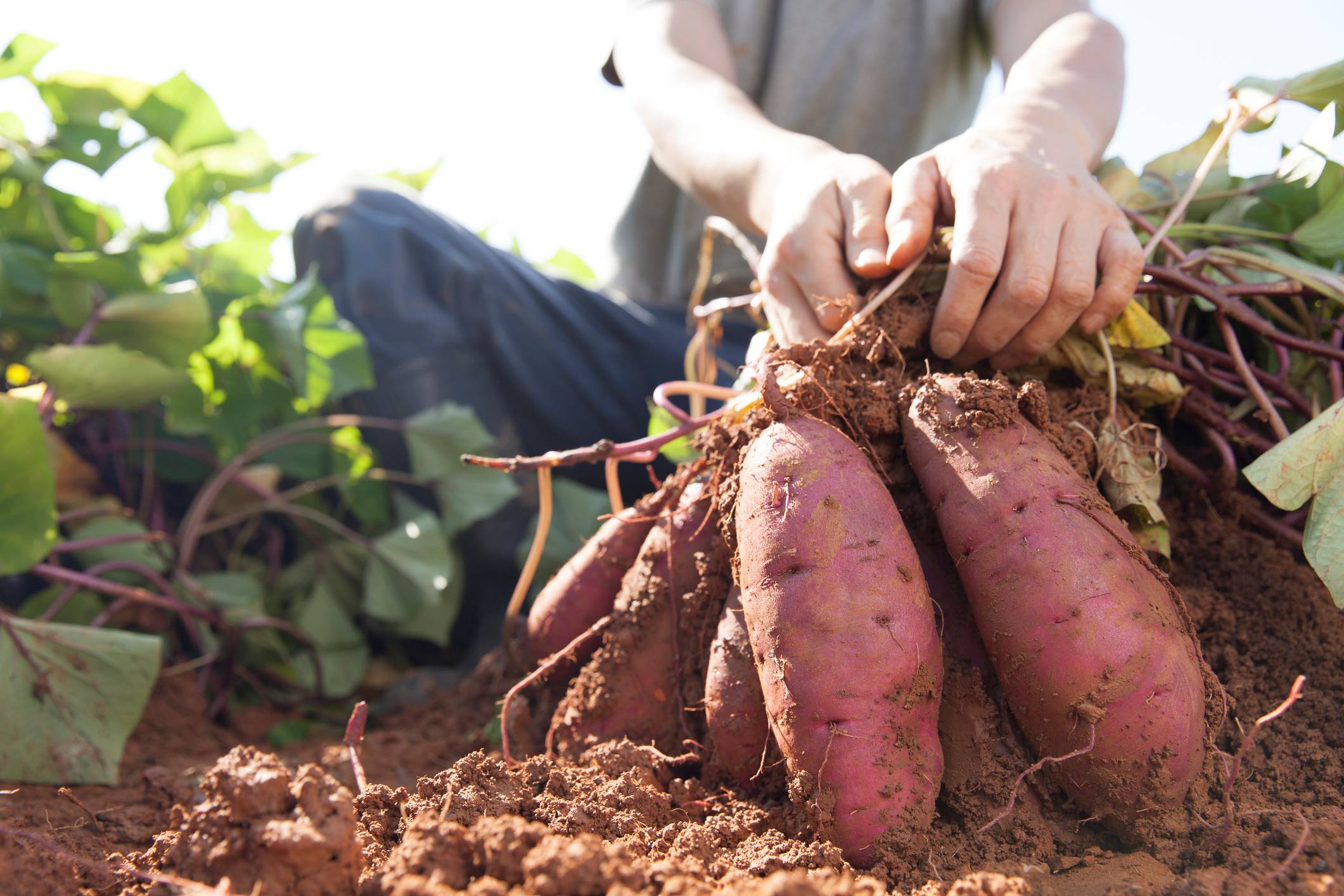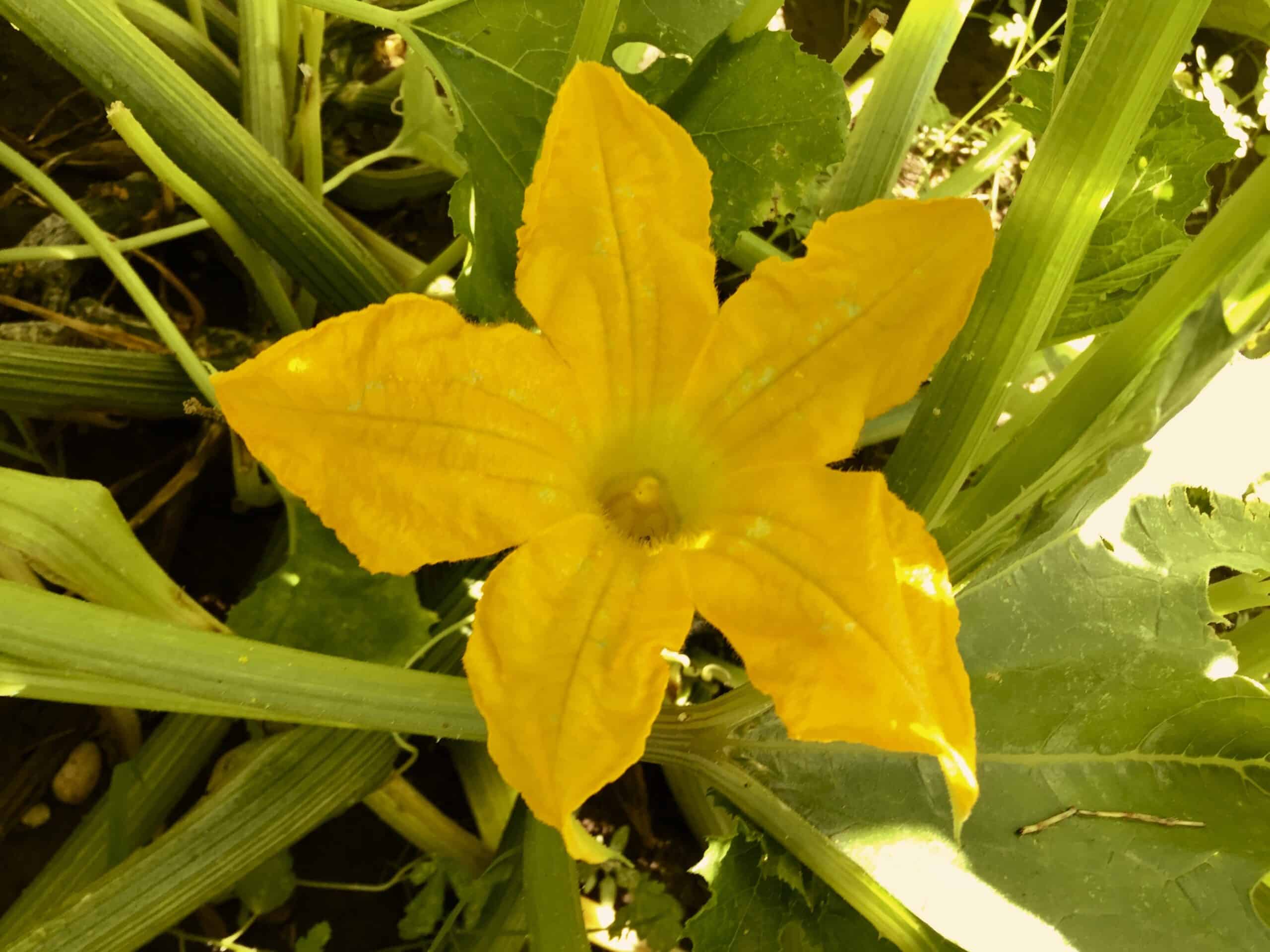Home>Types of Gardening>Edible Gardening>How To Harvest Zucchini Seeds
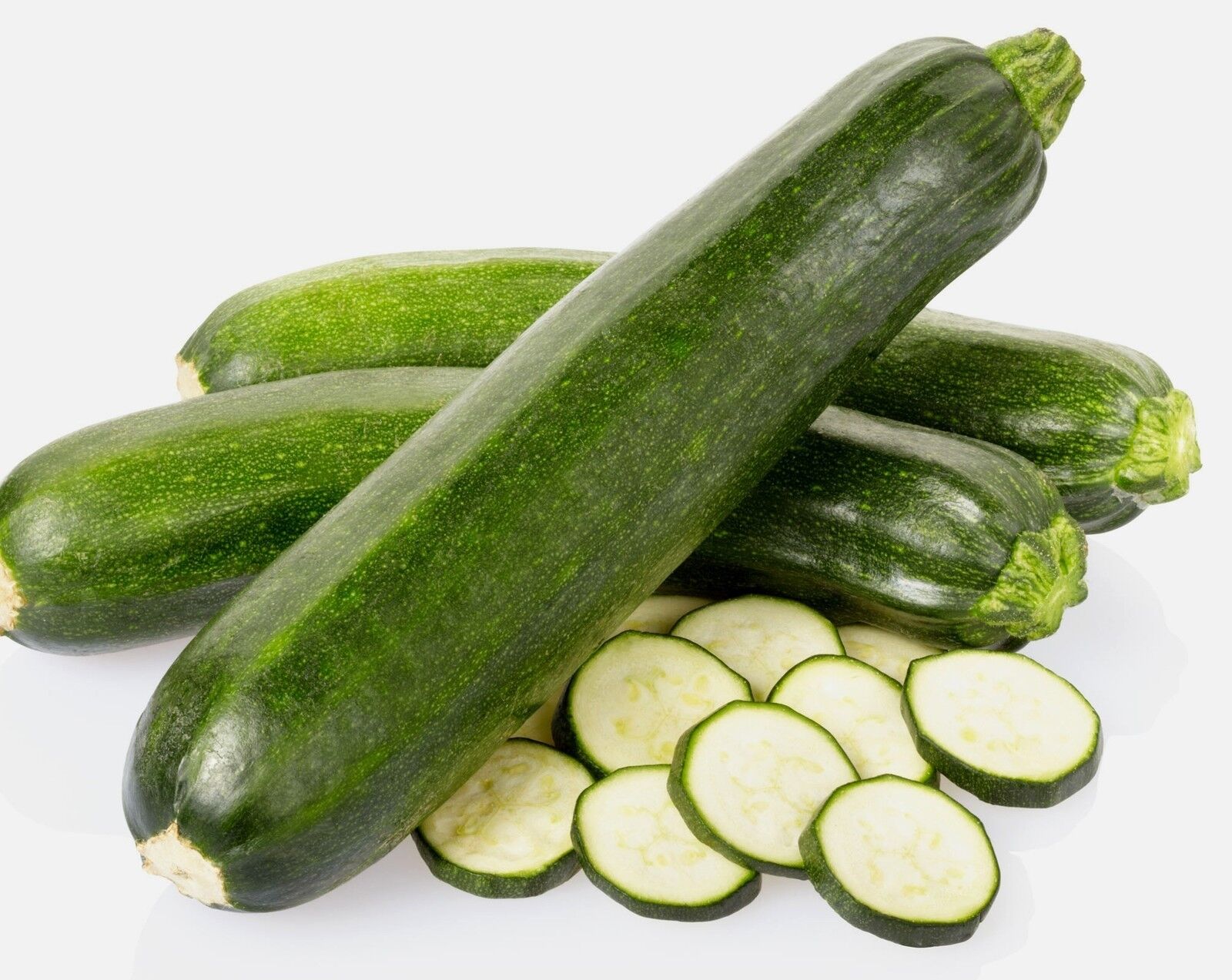

Edible Gardening
How To Harvest Zucchini Seeds
Published: September 17, 2023
Learn how to harvest zucchini seeds in your edible gardening journey. Find out the best practices and tips for a successful seed saving process.
(Many of the links in this article redirect to a specific reviewed product. Your purchase of these products through affiliate links helps to generate commission for Chicagolandgardening.com, at no extra cost. Learn more)
Table of Contents
- Introduction
- Why Harvest Zucchini Seeds?
- When to Harvest Zucchini Seeds
- Selecting the Right Zucchini for Seed Harvesting
- Step 1: Allowing Zucchini to Mature on the Vine
- Step 2: Identifying Ripe Zucchini for Seed Extraction
- Step 3: Preparing Zucchini for Seed Harvesting
- Step 4: Extracting Zucchini Seeds
- Step 5: Drying and Storing Zucchini Seeds
- Conclusion
Introduction
Welcome to the world of edible gardening, where you can cultivate delicious and nutritious fruits and vegetables right in your own backyard. One of the most popular crops for home gardeners is zucchini, known for its abundant and versatile harvest. While most people enjoy zucchini for its tender flesh and mild flavor, did you know that you can also harvest zucchini seeds to grow your own zucchini plants in the future?
Harvesting zucchini seeds is a rewarding practice that allows you to save money on seeds and maintain the characteristics of your favorite zucchini varieties. Plus, it adds an extra level of self-sufficiency and sustainability to your gardening journey. In this article, we will guide you through the process of harvesting zucchini seeds step by step, so you can start collecting and saving seeds from your own zucchini plants.
Before we dive into the specifics of how to harvest zucchini seeds, let’s take a moment to explore why it’s worth the effort. By saving and replanting zucchini seeds, you can ensure a continuous supply of your favorite zucchini varieties year after year. It also gives you the opportunity to select seeds from plants that have shown exceptional traits, such as disease resistance or high yield.
In addition, harvesting zucchini seeds allows you to be more self-reliant and environmentally conscious. Instead of relying on commercial seed suppliers, who may use synthetic fertilizers and pesticides, you can take control of your seed sourcing process and cultivate zucchini plants that are free from harmful chemicals.
Now that we understand the benefits of harvesting zucchini seeds, let’s explore when and how to collect them for future use. By following the steps outlined in this article, you’ll be able to enjoy a bountiful supply of zucchini seeds and continue your edible gardening journey for years to come.
Why Harvest Zucchini Seeds?
Harvesting zucchini seeds offers several advantages for home gardeners. Whether you’re an experienced gardener or just starting out, saving zucchini seeds can be a rewarding and cost-effective practice. Here are some reasons why you should consider harvesting zucchini seeds:
1. Preserve Favorite Varieties: If you have a zucchini variety that you absolutely love, saving its seeds allows you to grow it again in the future. By harvesting seeds from your best-performing plants, you can preserve the specific characteristics that you appreciate, such as flavor, texture, or color.
2. Customize Your Garden: Each zucchini plant can vary slightly in traits such as size, shape, or productivity. By saving zucchini seeds, you can handpick the plants that exhibit the qualities you desire, creating a customized zucchini garden that suits your preferences.
3. Save Money: Buying seeds can be expensive, especially if you grow zucchini year after year. By harvesting and storing your zucchini seeds, you can save money in the long run by eliminating the need to purchase new seeds each season.
4. Promote Sustainability: Harvesting and replanting zucchini seeds contributes to a more sustainable gardening practice. By relying less on commercial seed suppliers, you reduce your environmental footprint and become more self-sufficient in your gardening endeavors.
5. Promote Diversity: Commercial seed suppliers often offer a limited range of zucchini varieties. By saving and exchanging seeds with other gardeners, you can contribute to the preservation of heirloom varieties and promote biodiversity in your garden.
6. Learn About the Plant Life Cycle: Harvesting zucchini seeds provides an opportunity to learn about the different stages of a plant’s life cycle, from pollination to seed formation. It deepens your understanding of the plant’s reproductive process and enhances your gardening knowledge.
By considering these reasons, you can see the value in harvesting zucchini seeds. Not only does it allow you to continue growing your favorite varieties, but it also empowers you as a gardener and supports sustainable and environmentally conscious practices. So, let’s dive into the process of when and how to harvest zucchini seeds.
When to Harvest Zucchini Seeds
Knowing the right time to harvest zucchini seeds is crucial for successful seed-saving. The timing impacts seed maturity and viability, ensuring that you collect seeds that are fully developed and capable of producing healthy plants. Here are some indicators to help you determine when to harvest zucchini seeds:
1. Ripeness of the Zucchini: To harvest zucchini seeds, you need to let the zucchini fruits mature fully on the vine. The zucchini should be overripe and have developed a hard and tough skin. Avoid picking zucchini for seed harvesting when they are still small and tender, as the seeds inside may not have fully developed.
2. Yellowing of the Zucchini: Another visual clue is the color of the zucchini skin. As the zucchini matures, it will start to turn yellow or golden in color. This indicates that the seeds inside have reached their full size and are ready for harvesting.
3. Drying of the Zucchini: Before harvesting the seeds, the zucchini needs to dry out naturally on the vine. This drying process allows the seeds to mature fully and obtain their maximum viability. Wait until the zucchini starts to shrivel and the skin becomes papery and thin.
4. Time Since Pollination: The time it takes for zucchini seeds to fully develop can vary depending on the variety and growing conditions. As a general guideline, allow zucchini fruits to remain on the vine for at least 4-6 weeks after pollination to ensure that the seeds have reached maturity.
5. Brown and Cracking Stem: Pay attention to the stem of the zucchini. When the zucchini is ready for seed harvesting, the stem will turn brown and start to crack near the fruit. This is a good indication that the seeds inside have fully developed.
By keeping an eye on these indicators, you can determine the optimal time to harvest zucchini seeds. Remember that it’s better to wait a little longer for the zucchini to fully ripen than to harvest them too soon. Once you’ve determined that the zucchini is ready, you can proceed with the seed extraction process.
Selecting the Right Zucchini for Seed Harvesting
Choosing the right zucchini for seed harvesting is essential to ensure the quality and viability of the seeds you collect. Here are some factors to consider when selecting zucchini plants for seed harvesting:
1. Open-Pollinated Varieties: Select zucchini varieties that are open-pollinated rather than hybrids. Open-pollinated zucchini plants produce seeds that are true-to-type, meaning the offspring will resemble their parent plant. Hybrid seeds, on the other hand, may not produce the same characteristics in the next generation.
2. Healthy and Disease-Free Plants: Choose zucchini plants that are healthy, disease-resistant, and free from pests. By selecting plants with robust and vigorous growth, you increase the chances of obtaining high-quality seeds.
3. Desirable Characteristics: Consider the traits you want to preserve in the zucchini variety. Whether it’s flavor, texture, color, or yield, choose plants that exhibit the specific qualities you appreciate. This allows you to maintain and improve those characteristics in future generations.
4. Genetic Diversity: To ensure the long-term health and resilience of your zucchini plants, it’s advisable to select seeds from multiple plants rather than just one. This promotes genetic diversity and helps prevent the accumulation of genetic weaknesses in the seed population.
5. Isolation from Other Varieties: To maintain the purity of the zucchini seeds and avoid cross-pollination with other varieties, it’s important to isolate your chosen zucchini plants. Create physical barriers or separate the planting by distance to prevent pollen contamination from other zucchini or squash plants.
6. Seed Saving History: If possible, choose zucchini plants that have a proven track record of successful seed saving. If you have previously saved seeds from a particular zucchini plant with satisfactory results, consider using seeds from that plant again.
By considering these factors, you can select zucchini plants that are well-suited for seed harvesting. Remember to choose varieties that align with your preferences and gardening goals. Once you have identified the suitable zucchini plants, you can proceed with the process of harvesting, extracting, and storing the seeds for future use.
Step 1: Allowing Zucchini to Mature on the Vine
The first step in harvesting zucchini seeds is to allow the zucchini fruits to mature fully on the vine. This ensures that the seeds inside have enough time to develop and reach their maximum viability. Here’s how to go about it:
1. Observe the Fruit Size: Keep an eye on the zucchini fruits as they grow on the vine. They should reach their maximum size before you consider harvesting the seeds. The size will vary depending on the zucchini variety, but a general rule of thumb is to wait until the fruit is around 6-8 inches long and 2-3 inches in diameter.
2. Monitor the Color: Pay attention to the color of the zucchini skin. Generally, zucchinis are harvested when they are dark green and glossy. However, for seed harvesting, you need to wait until the zucchini starts to turn yellow or golden in color. This indicates that the fruit is mature and the seeds inside have reached their maximum size.
3. Check the Texture: Gently press your fingers against the skin of the zucchini. If it feels firm and hard, it is a good sign that the fruit is mature. Avoid harvesting zucchini for seed extraction if the skin is still soft or easily indented.
4. Avoid Overripeness: While it’s important to allow the zucchini to mature fully, be mindful not to let it become overripe. Overripe zucchinis have a hard and tough skin that is starting to wrinkle or shrivel. If the zucchini has reached this stage, it may have already started to develop mature seeds inside. Harvest it promptly to avoid any potential loss of seed quality.
5. Regularly Inspect the Plants: Check your zucchini plants regularly to monitor their progress. Some zucchinis may mature faster than others, so it’s important to assess each fruit individually. Harvest the zucchinis for seed extraction one by one as they meet the criteria mentioned above.
By allowing the zucchini fruits to mature on the vine, you ensure that the seeds inside have reached their full size and maturity. This step sets the foundation for successful seed harvesting and ensures that you collect high-quality zucchini seeds for future planting. Once the zucchinis are appropriately mature, you can move on to the next step of identifying and preparing them for seed extraction.
Step 2: Identifying Ripe Zucchini for Seed Extraction
Once your zucchini fruits have matured on the vine, it’s time to identify which ones are ready for seed extraction. This step requires careful observation and assessment of the zucchinis to ensure that you harvest seeds from fully developed and viable fruits. Here’s how to identify ripe zucchinis for seed extraction:
1. Color: Look for zucchinis that have turned yellow or golden in color. This indicates that the fruit is fully mature and the seeds inside have reached their optimal size.
2. Texture: Gently press your fingers against the skin of the zucchini. Ripe zucchinis should feel firm and hard. Avoid selecting zucchinis that are still soft or easily indented, as their seeds may not have fully developed.
3. Size and Shape: Choose zucchinis that have reached their maximum size and have a normal, elongated shape. Avoid zucchinis that are misshapen or smaller in size, as they may not have developed their seeds fully.
4. Appearance of the Stem: Examine the stem of the zucchini. If it has turned brown and starts to crack near the fruit, it is a good indication that the zucchini is ripe and ready for seed extraction.
5. Avoid Damaged or Diseased Fruits: Discard any zucchinis that show signs of damage or disease. These fruits may have compromised seeds that are not viable for planting.
6. Time Since Pollination: Consider the length of time the zucchini has been on the vine since pollination. Typically, zucchinis need to remain on the vine for at least 4-6 weeks after pollination to allow the seeds to fully develop. Take into account the specific recommendations for your zucchini variety.
By carefully assessing these factors, you can identify which zucchinis are ideal for seed extraction. Selecting ripe and healthy zucchinis ensures that you collect seeds of the highest quality, which in turn enhances the success of future plantings. Once you have identified the zucchinis for seed extraction, it’s time to prepare them for the next step – the actual extraction process.
Step 3: Preparing Zucchini for Seed Harvesting
Before you proceed with extracting zucchini seeds, it’s important to properly prepare the zucchinis to ensure that the seeds are in optimal condition. This step involves cleaning and sanitizing the zucchinis to remove any potential contaminants that can affect seed quality. Here’s how to prepare zucchinis for seed harvesting:
1. Harvest at the Right Time: Ensure that the zucchinis are fully ripe and mature, as discussed in the previous step. This ensures that the seeds inside have reached their full size and are ready for extraction.
2. Wash the Zucchinis: Start by gently washing the zucchinis under cool running water to remove any dirt or debris from the skin. Use a soft brush or cloth to scrub off any stubborn dirt.
3. Sanitize the Zucchinis: Prepare a solution of 10% bleach and water. Dip the zucchinis into the solution and let them sit for a few minutes. This helps to kill any potential pathogens or bacteria that could harm the seeds.
4. Rinse the Zucchinis: After sanitizing, thoroughly rinse the zucchinis with clean water to remove any traces of the bleach solution. Make sure to rinse off any remaining soil or dirt as well.
5. Dry the Zucchinis: Place the cleaned zucchinis on a clean towel or drying rack and allow them to air dry completely. Ensure that they are completely dry before moving on to the seed extraction process, as moisture can lead to mold or fungal growth.
6. Label and Separate: While the zucchinis are drying, label them with the variety name and date of harvest. It’s also helpful to separate different varieties if you’re harvesting seeds from multiple zucchinis to keep track of each one.
By following these preparation steps, you ensure that the zucchinis are clean and free from potential contaminants before you extract the seeds. This helps to maintain the integrity and viability of the seeds, increasing the chances of successful germination and growth in future plantings. Once the zucchinis are thoroughly dry, you can move on to the exciting step of extracting the zucchini seeds.
Step 4: Extracting Zucchini Seeds
Now that you’ve prepared the zucchinis, it’s time to extract the seeds. This step requires some manual effort, but it’s a rewarding process that connects you more intimately with the life cycle of your zucchini plants. Here’s how to extract zucchini seeds:
1. Cut the Zucchini Lengthwise: Start by cutting the zucchini lengthwise with a sharp knife. Be gentle to avoid damaging the seeds inside. Aim to cut the zucchini into halves or quarters, depending on its size.
2. Scrape out the Seeds: Use a spoon or scoop to gently scrape out the seeds from the flesh of the zucchini. Be careful not to remove too much flesh, as it can provide valuable nutrients for the seeds. The seeds will be embedded in a gelatinous substance, which is normal.
3. Transfer the Seeds to a Bowl: Collect the extracted seeds in a clean bowl. Remove any excess flesh or gelatinous substance by rinsing them under running water. Do not use soap or any chemicals as they can damage the seeds.
4. Separate the Seeds from Debris: Fill the bowl with water and gently swirl it to separate the seeds from any remaining debris or floating matter. The viable seeds will sink to the bottom, while the debris will float on top.
5. Strain and Dry the Seeds: Pour the contents of the bowl through a fine-mesh strainer to separate the seeds from the water and debris. Rinse the seeds again with clean water to ensure they are fully clean. Place the seeds on a paper towel or a clean surface to air dry completely.
6. Label and Store the Seeds: Once the seeds are dry, label them with the variety name and the date of harvest. Store the seeds in a dry and cool place, such as an airtight container or a sealed envelope. Be sure to keep them away from direct sunlight or extreme temperature fluctuations.
By following these steps, you can successfully extract zucchini seeds from the mature fruits. Take your time and handle the seeds with care to ensure their viability. Now that the seeds are ready, you can move on to the final step – drying and storing the zucchini seeds for future use.
Step 5: Drying and Storing Zucchini Seeds
After extracting the zucchini seeds, it’s crucial to dry and store them properly to maintain their viability for future use. Proper drying and storage conditions help preserve the quality and germination potential of the seeds. Here’s how to dry and store zucchini seeds:
1. Drying the Seeds: Spread the extracted seeds on a clean, dry surface like a paper towel or a fine-mesh screen. Ensure that the seeds are spread out in a single layer to allow for maximum airflow. Place the seeds in a well-ventilated area that is away from direct sunlight, humidity, and temperature fluctuations.
2. Air Drying Period: Allow the zucchini seeds to air dry for at least one to two weeks. During this time, regularly check the seeds for moisture. They should feel hard, dry, and brittle when they are ready for storage. If any seeds still feel slightly moist, give them a little more time to dry.
3. Test for Dryness: Conduct a simple “snap” test to check if the seeds are fully dry. Take a seed between your fingers and try to snap it in half. If it breaks easily, without any bending or resistance, it is sufficiently dry. If the seed bends or refuses to break, it needs more drying time.
4. Label the Storage Container: Once the seeds are dry, transfer them into a dry, airtight container such as a glass jar or a seed envelope. Label the container with the variety name and the date of seed collection. This helps you keep track of the seeds and ensures you use the oldest seeds first.
5. Choose a Cool and Dry Storage Location: Store the labeled containers in a cool, dry, and dark location. A cool basement or refrigerator are ideal places for long-term seed storage. Make sure the storage area maintains a constant temperature and humidity level to prevent the seeds from deteriorating.
6. Periodic Viability Testing: To ensure the seeds remain viable, it’s advisable to perform periodic germination tests. Plant a small sample of the seeds every year to assess their germination rate. If the germination rate decreases significantly, consider replenishing your seed stock with fresh seeds.
By following these steps, you can ensure that your zucchini seeds are properly dried and stored, maintaining their viability over an extended period. Properly stored zucchini seeds can remain viable for several years, allowing you to continue growing healthy and productive zucchini plants in the future.
Conclusion
Harvesting zucchini seeds is a rewarding process that allows you to save money, preserve your favorite zucchini varieties, and promote sustainability in your gardening practices. By following the step-by-step process outlined in this article, you can successfully harvest, prepare, and store zucchini seeds for future planting. Let’s recap the key points:
1. Start by allowing the zucchinis to mature on the vine, ensuring they are fully ripe, yellowing, and have developed a tough skin.
2. Next, identify the ripe zucchinis for seed extraction based on their color, texture, size, appearance of the stem, and time since pollination.
3. Once identified, prepare the zucchinis by washing, sanitizing, and drying them to ensure the seeds are in optimal condition.
4. Extract the seeds by cutting the zucchinis, scraping out the seeds, and separating them from any debris or gelatinous substance.
5. Then, dry the seeds thoroughly by air drying them for a couple of weeks, and conduct a “snap” test to ensure they are fully dry.
6. Lastly, store the dried seeds in a cool, dry, and dark location in labeled containers, and periodically test their viability over time.
By following these steps, you can collect and save high-quality zucchini seeds, allowing you to continue growing your favorite varieties year after year. As you embark on your seed-saving journey, remember to experiment, learn from your experiences, and enjoy the satisfaction of self-sufficiency and sustainability in your edible gardening endeavors.


